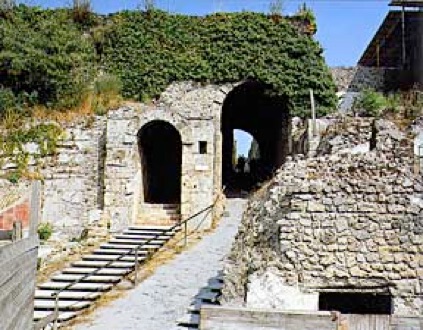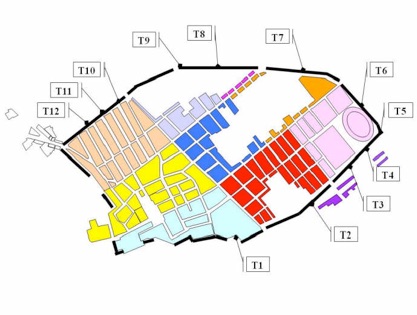Archaeological tours, packages and exclusive multy day excursions in Campania for tourists, lovers,
scholars and students.





Archaeological tours, packages and exclusive multy day excursions in Campania for tourists, lovers,
scholars and students.
The city of Pompeii was built on a rocky lava walls which formed a natural defense in its western and southwestern portions, but it was also equipped with a wall length of 3220m. From studies it was possible to recognize various stages along the walls of buildings that range from the sixth century. a. C. Sillana age (I century BC).
The first phase saw the use of Vesuvian lava blocks called pappante (VI century BC) For the construction of a wall hanging to one, then probably under Greek influence, the walls were changed in a structure with two defensive Sarno limestone with an inner filling (V century BC). The walls, as well as we can see today, were built with a technique known to agger, that is blaming a powerful embankment facing the inside of a powerful double curtain wall, made of blocks of limestone isodomic Tufo of Nocera and Sarno (IV century BC). The last phase of fortifications dating back to the early first century BC, when they were reinforced with sturdy guard towers at regular intervals, in anticipation of war against Silla.


Pompeii Towers around the city walls
Porta Marina in Pompeii
FORTIFICATIONS AND GATES OF ANCIENT POMPEII
Along the walls were opening seven gates of the city Herculaneum Gate to the North-West, a structure consisting of three arches; Vesuvius Gate to the North, collapsed during the earthquake of 62 AD, the East Gate of Nola preceded by two bastions and decorated with a head of Minerva on the keystone of the arch; Sarno Gate to the East again, completely destroyed with only recognizable part of the outer side; Porta Nocera located in South-East, the very well preserved; Stabia South Gate west maybe the most ancient of Pompeii Porta Marina to the west that led to the harbor, formed by a massive gallery with two passes, one for pedestrians and one for wagons, and the eighth, only a hypothesis considering a symmetrical distance between the other ports, said Capua Gate, which was to be built in North-East.
Pompeii Tour guide - Herculaneum Tour guide - Stabiae Tour guide - Oplontis Tour guide - Naples Tour guide
Amalfi Coast - Sorrento - Positano - Paestum Tour guide - Capua Amphitheater - Procida - Ischia - Capri
Copyright © Pompeiin.com - E-mail: info@pompeiin.com

